IR has always been synonymous with innovation and an ever-expanding armamentarium of procedures, technologies and devices to support and improve patient care. This innovative legacy has only strengthened in recent years with developments in minimally invasive treatments for vascular, musculoskeletal and oncologic disease, among others. With the advent of the integrated IR Residency and IR’s transition to a primary specialty in the U.S. graduate medical education system, there has never been a more appropriate time to consider the benefits of subspecialization.
What is IR subspecialization?
Because IR is a broad field unified by medical imaging and minimally invasive techniques, its scope isn’t confined to a single organ system or pathology. Over time, both individual IRs and the specialty at large have developed specific focuses on certain body systems or groups of pathologies, resulting in subspecialties including interventional oncology, pediatrics, vascular disease, musculoskeletal IR/interventional pain management and neurointerventional radiology (which exists more as a “sibling” specialty in the training paradigm than a direct subspecialty of IR).
By far, the most common path toward subspecialization in IR is focused practice development over time. This may include further education via residencies, intensive on-the-job training, shadowing other practices, or participating in society- or industry-sponsored courses. A focused subspecialty fellowship eases the burden of independent development and brings the various educational pathways together. However, IR subspecialty fellowships are currently uncommon.
In contrast, dedicated fellowships exist in peripheral arterial disease for interventional cardiologists, and fellowships in interventional pain are available to graduates of anesthesia and physical medicine and rehabilitation programs. Graduating IR residents who are well qualified to learn and practice such techniques are not typically eligible for these fellowships. As a result, the question of subspecialization is also one of maintaining competitiveness in the marketplace.
While an additional year of training won’t appeal to all IR residents, advanced fellowship offers an accelerated path to additional skill sets that can benefit individual IRs, their communities and the specialty.
Evolution of training in parallel with evolution of techniques
With the dizzying speed at which new techniques emerge in IR, education of trainees is crucial to further develop these competencies and keep pace in a field with many competitors. IRs working on the vanguard of the specialty are uniquely equipped to pass on such knowledge.
Douglas P. Beall, MD, FSIR, is a private practice IR who specializes in complex musculoskeletal interventions. After following an unconventional training path, Dr. Beall founded a comprehensive musculoskeletal practice and currently runs a musculoskeletal radiology fellowship predominantly focused on advanced interventions.
Douglas P. Beall, MD, FSIR (top); Sreekumar Madassery, MD (bottom).
“A few years ago, when I was developing new techniques, a colleague told me I had a duty to pass on what I was doing to the future generation of clinicians. If I got hit by a bus, they said, a lot of the techniques and clinical information would be gone,” says Dr. Beall. “I was resistant, but an hour later, I picked up the phone and accepted a fellow. At this point in my career, I’m glad I did.”
Dr. Beall’s program allows fellows to explore the latest techniques and devices, often in the context of clinical trials, and become active participants in the advancement of the field. “Not only do I support physician collaboration with device and biotech companies, but I also believe this collaboration should be encouraged and fostered,” says Dr. Beall. “This collaboration is what will produce significant advancements in technology and techniques and should be encouraged at all points in one’s career.”
Spreading the wealth
Dr. Beall’s program presents a model for subspecialization through advanced training that, by virtue of its private-practice basis, does not compromise the training of IR residents. Academic fellowships can be similarly successful when the institution’s procedural scope and volume is enough to support a fellowship without overburdening the resident experience. One such program is the Advanced VIR Fellowship at Rush University Medical Center in Chicago, directed by Sreekumar Madassery, MD. Rush has robust practices in peripheral arterial disease and interventional oncology, which can benefit fellows.
“When it comes to patient care, primary referrals and being considered a primary treatment modality for patients, one of the main ways I see IR having a seat at the table is by being subspecialized in what we offer,” says Dr. Madassery. “By doing this, we open the door for our trainees to have better job potential as dedicated IRs.”
In addition to time in the angio suite, fellows have dedicated clinic and research time and function as junior faculty, teaching and mentoring residents while gaining exposure to complex vascular and oncologic interventions.
“As long as training programs continue to increase their case volumes, referrals and types of interventions, there can be enough cases to go around,” Dr. Madassery says.
Additional experience rotating in wound care, clinic and other environments like office-based labs and ambulatory surgical centers not routinely part of an academic center’s IR rotations can offer further clinical edification and offload a fellow from the primary services, ensuring adequate resident case exposure.
The value of a well-trained IR
Beyond IR, most medical specialties are trending toward minimally invasive techniques. “The continued development of IR physicians with a unique set of skills in a particular organ system or along the lines of a traditional medical specialty will help to produce physicians with next-level skill,” Dr. Beall says. The unique value of a well-trained IR lies in the uniquely broad approach to diagnosis, assessment and treatment imparted through training in both diagnostic imaging and interventional care.
“Practicing and maintaining general skills have always been a strength of the IR physician,” Dr. Beall says, “but developing subspecialization to whatever degree is necessary to provide the needed care is in our DNA.”
Dr. Madassery similarly advocates for a broad but solid clinical foundation which, in his opinion, is further enhanced by subspecialization. “Beating our chests and preaching how good we are at interventions is great, but it does little for increasing our patient volume and referrals,” he says. “By being more relevant in comprehensive disease management teams we can help focus on curative interventions, rather than often being contacted in a palliative situation.”
By being more relevant in comprehensive disease management teams we can help focus on curative interventions, rather than often being contacted in a palliative situation.
Sreekumar Madassery, MD
Parallels with general surgery
The development of IR as a specialty has been compared to general surgery,1 which itself began as a solely technical trade and only later evolved to encompass clinical care, ultimately leading to modern surgical practice. The analogous thrust toward more comprehensive clinical care in IR has been prevalent in recent years, and the evolution of general surgery toward a more subspecialized field also merits consideration.
As surgical practice has advanced, truly “general” surgeons have become less common in many areas. A graduating general surgery resident might not, for example, be comfortable performing colorectal surgery without experience from a dedicated fellowship, whereas such a practice used to be fully within the domain of the general surgeon. Similarly, shifts in training paradigms have impacted trainee autonomy, raising concerns regarding the readiness of graduating surgery residents for independent practice.2 Such concerns are of course not limited to general surgery.
“One trend that must be avoided is that, with increasing supervisory responsibility, the trainee becomes sidelined only to observe the attending at work, or to be so overarchingly supervised as to never have to troubleshoot or to make prospective decisions for themselves,” Dr. Beall says.
As IR evolves and its subspecialties mature, competency could potentially decrease as a result of “shunting” procedures from residency to fellowship. The goal must remain for the IR Residency to produce fully functioning clinicians who can handle the general expectations of the communities they serve without requiring further training to become sufficiently competent. The role of IR subspecialty fellowships is likely to expand—but should not compromise—the overarching goal of producing highly competent general IRs capable of independent practice. Private-practice–based fellowships and focused fellowships in high-volume academic practices are potential avenues to push forward innovation and expand access to advanced minimally invasive procedures and comprehensive clinical care without jeopardizing this goal.
No better time than now
Regardless of the shape that future IR subspecialization takes, the field will doubtlessly continue its trend of innovation and change. There is tremendous potential for IRs to mold the future of minimally invasive medicine through training the next generation and actively participating in the advancement of the specialty. “We are at the top of a logarithmic curve of the expansion of great minimally invasive techniques that can produce maximally beneficial outcomes,” says Dr. Beall. “There has never been a better time to be doing what we are than right now.”
References
- Soares GM, Murphy TP. Clinical interventional radiology: Parallels with the evolution of general surgery. Semin Intervent Radio 2005 Mar;22(1):10-4.
- George BC, Bohnen JD, Williams RG, Meyerson SL, Schuller MC, Clark MJ, Meier AH, Torbeck L, Mandell SP, Mullen JT, Smink DS, Scully RE, Chipman JG, Auyang ED, Terhune KP, Wise PE, Choi JN, Foley EF, Dimick JB, Choti MA, Soper NJ, Lillemoe KD, Zwischenberger JB, Dunnington GL, DaRosa DA, Fryer JP; Procedural Learning and Safety Collaborative (PLSC). Readiness of US General Surgery residents for independent practice. Ann Surg. 2017 Oct;266(4):582-594.



